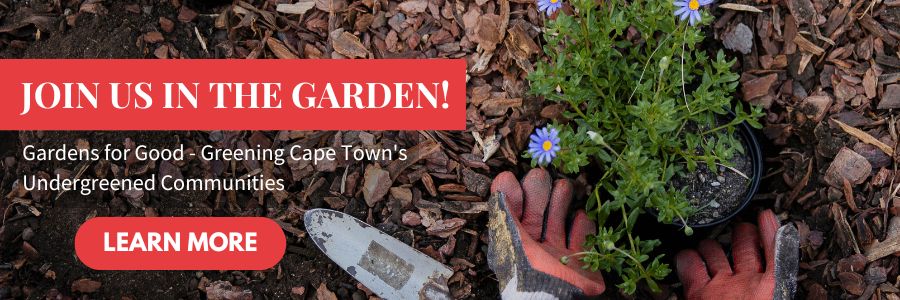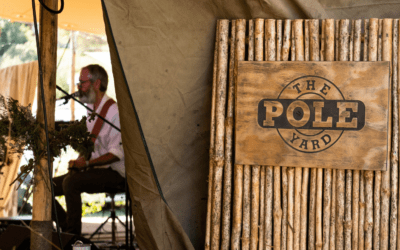
The bright yellow flowers of the African teak are a bountiful source of pollen for bees. The African teak is one of the first trees to flower in August (winter) so it’s an early source of food for Natal bees. The African teak also makes an attractive shade tree in KwaZulu Natal. Sadly it does not handle the Highveld frost very well.
2. African wattle (Peltophorum africanum)
The sprays of yellow flowers produced by the African wattle would make Barry the Bee incredible happy and from September to April will keep the bees buzzing. Like the African teak, the African wattle is an excellent shade tree and very attractive garden specimen if you reside in Gauteng or the Highveld.
3. Apple-leaf (Philenoptera violacea)
The apple-leaf is a water-wise tree that does well in times of drought and its wisteria purple flowers are the perfect pollen factory for honeybees. It is a sensational street tree as it has a non-aggressive root system. The apple-leaf does not like frost so it is ideal for Limpopo and Natal beekeepers.
4. Black thorn (Acacia mellifera Subsp. detinens)
The black thorn is the ideal tree for beekeepers in the northern parts of the country. This tree produces copious amounts of flowers filled with nectar and pollen making it a honeybee’s delight. Plant it near your beehive but away from foundations as its root system can be damaging to infrastructure!
5. Wild pear (Dombeya rotundifolia)
The wild pear’s flowers look a lot like the blooms of the false olive and forest elder and they too are the perfect recipe for honey. Not only does this tree occur country-wide, it has an unusual flowering cycle from July to September. Its flowers are sweet and fragrant and are like a trip to Sweets from Heaven for honeybees. It is also a wonderful garden specimen in every way.
6. Buffalo thorn (Ziziphus mucronata)
The buffalo thorn is an extremely useful tree in attracting more than just bees – butterfly and birds are drawn to it as well! Its little yellow-green flowers are filled with nectar and can thrive across the country except in winter rainfall areas. Ever eaten acacia honey before? Now’s the time to start!
7. Sweet thorn (Acacia karroo)
This evergreen tree occurs across South Africa and the ambrosial scented flowers attract bees and plenty of butterflies. The sweet thorn is a highly adaptable tree but it cannot be planted near infrastructure. Interestingly enough a bee’s favourite colours are yellow and blue which is why so many yellow flowering trees use bees as their pollinators.
On the other hand, a sunbird’s favourite colour is red but that doesn’t stop bees loving the scarlet flowers of the tree fuscia… You can hear the buzzing of the bees around the scarlet flowers of the tree fuscia! This tree occurs along the coast and into Gauteng. The tree fuscia flowers for an extensive period from April to December attracting bees and sunbirds from miles around.
9. Dogwood (Rhamnus prinoides)
The dogwood is a very useful tree not only for bees but landscapers too as it makes for a great hedge or screen plant. You don’t only need to grow it near your hive but next to your fishpond as its low foliage provides shelter for aquatic life. The dogwood thrives in all parts of the country and is readily seen on nursery floors.
10. False olive (Buddleja saligna)
A beekeeper’s darling, the false olive’s bushy white blossoms provide an excellent source of fuel for bees in early August. Occurring in Cape Town, Gauteng and Natal, it makes for a ‘lekker’ garden plant and has a unique colour scheme. It also poses zero threat to foundations.
11. Forest elder (Nuxia floribunda)
Also a superb beekeeper’s choice, with similar flowers to the false olive, the forest elders’ pompom blooms are packed with nectar and pollen. It is also one of the most attractive indigenous trees in South Africa. The most significant thing about the forest elder is that it flowers in the winter months, from May to August, when the bees are most desperate, making it a-must-have honey tree.
12. Coastal coral tree (Erythrina caffra)
Everyone has heard of fynbos honey, the proteas, spiderheads, ericas and blushing brides do a wonderful job in keeping the bees abuzz in the summer but the Erythrina caffra or the coastal coral tree is aflame with bees in the rainy winter months in the Western Cape. All of the South African Erythrinas are pollinator-friendly trees. The dwarf coral and lucky bean tree in the Highveld and the broad-leafed coral tree for a Durban garden.
13. Sumach-bean (Elephantorrhiza burkei)
Occurring in the bulge of South Africa the sumach-bean is a honey making factory. The sumach-bean is a very attractive tree in flower and thrives in rockeries . It can withstand mild frost and is drought resistant making it a great tree for Pretoria beekeepers.




Possibly the hardiest, most useful, loved and needed plant in South Africa – the spekboom forms great hedges and sequesters more CO2 than any other plant, not to mention providing fodder for game during drought. So it is hardly surprising its little pink flowers are also loved by bees and any respectable SABIO beekeeper. (If you have bees, even for fun, you should ‘bee’ a member of SABIO)
15. Waterberry (Syzygium cordatum)
Want to keep the bees happy, plant a waterberry in Natal! This pollinator-friendly tree also grows at water points and is an indicator of a low water table. It looks stunning in a garden with its glossy leaves and evergreen shade but mind its invasive root system.
16. Blue guarri (Euclea crispa subsp. crispa)
A model for a small Gauteng bee garden! The bees love its yellow bell-shaped petals and the lichen love its blue grey bark. Each plant is male or female so these type of plants are best planted in groups to encourage pollination.
17. Wild silver oak (Brachylaena discolour)
The entire tree is covered in white blossoms when in flower and these pungent blooms attract hives of happy bees. This tree occurs along the coast from Mozambique through to the Eastern Cape. Great for a lawn tree, but remove lower branches if you would like it to have a less dense appearance.
18. Sickle bush (Dichrostachys cinerea)
The sickle bush has cute yellow and pink lantern-like flowers that bees just adore. It is drought resistant and occurs in the north of the country. Insects and birds are also attracted to its blossoms.
19. September bush (Polygala myrtifolia)
The September bush attracts big and bold carpenter bees to pollinate them. It has fantastic fandango purple flowers and is a pioneer shrub that occurs all along the coast although it also survives in Gauteng. They flower throughout the year but more prolifically in winter.
20. Wild laburnum (Calpurnia aurea subsp. aurea)
In contrast to the September bush’s purple attire, the sunshine yellow flowers of the wild laburnum hold the ideal raw materials for carpenter bees in the Natal region of South Africa. The wild laburnum is a wonderful garden tree and it was so popular in colonial times it was one of the first trees to be taken back to Europe.
Happy buzzing about your garden this #WorldHoneyBeeDay and remember the precious bees! To find flowers and plants to further your bee garden read: South African flowers for bees.
Put Hope Into Action – A letter from our CEO, Misha Teasdale
Our mission at Greenpop is to get active and not anxious about the state of the planet. Put hope into action this Arbor Month and beyond!
Sustainable Timber Takes the Stage at Reforest Fest
Sustainable timber made headway at Reforest Fest 2023. The Pole Yard’s erected a creative and sustainable stage with FSC-certified wood.
Impact In Person: The Value of Food Gardening in Low-Income Communities, with Jessica Kannemeyer
The community members from Christel House South Africa are an inspiring testament to the impact food gardening has.
Greenpop Foundation NPC is a registered non-profit organisation. Registration Number (NPO): 151-411 NPO.



